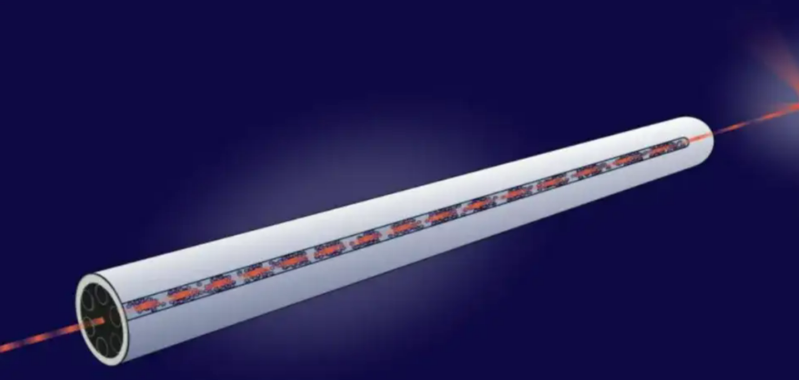Revolution in Optical Transmission: Hollow-Core Fiber vs. Solid-Core Fiber
In optical fiber technology, the cornerstone of modern communications, a quiet revolution is underway. Solid-core fiber, which has dominated the market for decades, is facing a formidable challenger: hollow-core fiber. As the name suggests, the former relies on a solid glass fiber to conduct light, while the latter boldly “hollows out” the center, allowing light to travel through air. This fundamental structural difference has led to a series of significant performance differences, foreshadowing a different future for optical communications, sensing, and laser transmission.
I. Core Principle: A Revolution in Optical Transmission Mechanisms
1. Solid-Core Fiber: The Classic Path of Total Internal Reflection
Solid-core fiber is currently the absolute mainstream. It consists of a high-refractive-index core and a low-refractive-index cladding. Its theoretical basis is the physics of “total internal reflection.” When light enters the fiber core at a specific angle, it undergoes continuous total internal reflection at the boundary between the core and cladding, like being trapped in a tube, zigzagging forward. This is a “guiding” mechanism, where light constantly interacts with the glass material.
2. Hollow-core Fiber: An Innovative Approach to Air Transmission
Hollow-core fiber takes a different approach. It uses complex microstructures (such as photonic band gaps or antiresonant structures) to create an air channel at the fiber’s center. The principle is that this structure creates a “photonic band gap” for light of a specific wavelength, preventing it from propagating through the surrounding glass structure, thereby confining it to the low-loss air core for linear propagation. This confinement mechanism ensures that the majority of light’s energy travels through the air.
II. Application Scenarios
Applications of Solid-core Fiber (Current Mainstay):
Long-distance backbone communication networks: With its ultra-low loss and low cost, it is the unrivaled choice for building the physical foundation of the global internet.
Fiber-to-the-home: Its economical and reliable performance is unmatched in the access network sector.
General Data Communications: Most interconnections within data centers, enterprise LANs, etc.
Applications of Hollow-core Fiber (Emerging Frontier):
Ultra-low Latency Networks: High-frequency financial trading and interconnection of large supercomputing centers require millisecond or even microsecond latency, a core competitive advantage.
High-power laser transmission: Industrial processing (such as laser welding and cutting) and laser weapon systems require extremely high laser power transmission without causing nonlinear damage.
Quantum communication: The interaction between photons and glass can destroy quantum states. Hollow-core fiber better preserves the quantum properties of photons, making it an ideal medium for quantum networks.
Special band sensing: Mid-infrared spectral transmission for environmental monitoring and medical diagnosis.
III. Summary
Solid-core fiber is like a winding but extremely smooth asphalt road. While it cannot reach the maximum speed limit, its advantages are low cost and good road conditions, making it suitable for carrying most traffic.
Hollow-core fiber is like a straight and nearly unobstructed highway tunnel, allowing vehicles to sprint at top speed. It is specifically designed for specialized vehicles with extreme speed and efficiency requirements.
We are currently in a transition period between new and old technologies. Solid-core fiber, due to its maturity, stability, and low cost, will remain the absolute backbone of global communication networks for the foreseeable future. Hollow-core fiber, a disruptive technology, is moving from the laboratory to specific high-end markets. It addresses the inherent bottlenecks of solid-core fiber—latency and nonlinear effects.
In the future, with advancements in manufacturing processes and reductions in costs, hollow-core fiber is expected to gradually penetrate beyond specialized applications into more areas, forming a complementary and coexisting landscape with solid-core fiber, together weaving a faster, stronger, and smarter optical network of the future.

Comments are closed